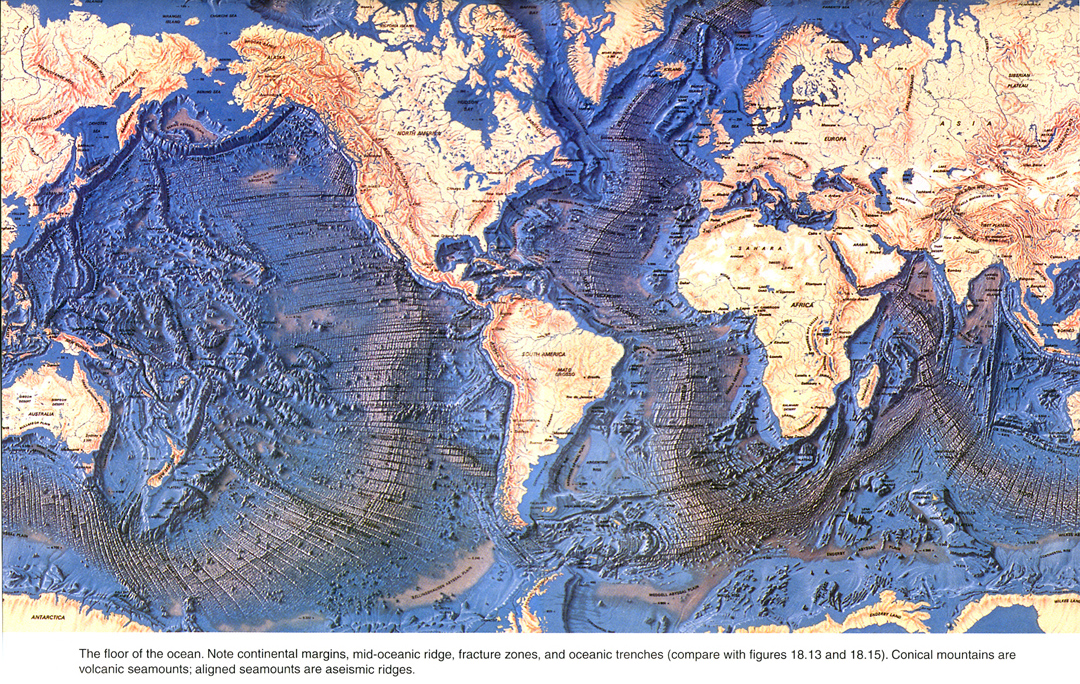Planet Earth
Plate Tectonics Laboratory


To get a copy of the Manual for this lab, click here.
The Theory of
Plate
Tectonics posits that:
The outermost part of the Earth is made of lithospheric plates (some 70-125 km thick) that move relative to one another (Fig. 17.1).
The plates move away from the divergent plate boundaries and encounter other plates at convergent plate boundaries that are moving toward them in a relative sense.
At convergent plate boundaries one plate (oceanic) moves beneath the other descending into the mantle – a process called subduction. Continental crust does not subduct. The descending plate may also become attached or sutured to the overlying plate.
A transform plate boundary is a type of strike–slip fault – plates slide past one another and lithosphere is neither created or destroyed.
Seismic Tomography is a technique to examine the deep interior of the Earth.
How magma is generated can be puzzling given that the only molten portion of the Earth is the outer core. This and the partial molten low velocity zone of the mantle are many kilometers beneath the surface - so why is there molten rock erupted from volcanoes? There is no reservoir of magma just beneath the surface waiting to erupt. There are special conditions that cause the relatively rare occurrence of magma in the crust and mantle.
Magma generally forms in three plate tectonic settings: convergent margins, divergent margins, and hotspots.
Transform margins are generally free from magmatism.
Generation of magma through melting of rocks is influenced through pressure, temperature, the mineralogy of the particular rock, and the influence of fluids.